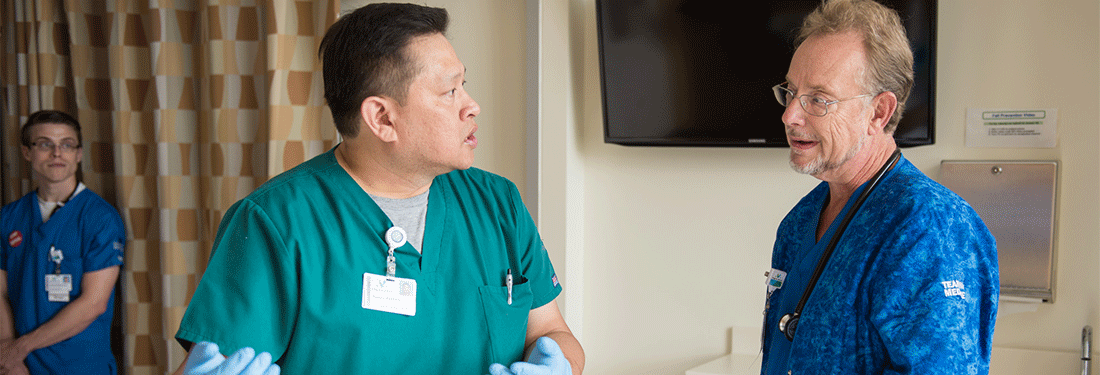Which Is Better for Engaging Health Care Staff: Lean or Six Sigma?
In my work with health care organizations, I’m sometimes asked about the differences between lean and Six Sigma. They’re two different philosophies, but people often see them linked together when they’re looking for new ways to undertake quality improvement projects.
The ideals and reality of using Six Sigma in health care
Highly trained Six Sigma experts use the steps of the DMAIC (define, measure, analyze, improve, control) model, in a specific order, to develop, design and redesign a process so that there’s effectively a one-in-a-million chance (or more specifically, a goal of 3.4 defects per million) that an error will occur. To attain their goal, the experts work to achieve six sigmas, a measurement for standard deviation originating from statistics, to perfect their processes. This goal fits right in with the health care philosophy of doing no harm to patients.
When it comes to improving health care, however, the rigor required to collect the usable data can be quite labor-intensive. Six Sigma is a heavily data-driven process designed to steer the improvement work and eliminate defects — and that’s why some organizations find that achieving quality improvement goals with Six Sigma is both difficult and time-consuming. These organizations often rely on professionals with Six Sigma or Lean Six Sigma certifications to help maintain the rigor of the methodology, especially when it comes to the statistics practice. But if an organization’s few certified experts are the only ones trained to drive and monitor the improvement work, the organization can ultimately experience resource constraints and find it hard to apply improvement to health care.
Six Sigma’s applications are best applied in large organizations. For smaller organizations, the goal of developing defect-free processes to six sigmas can be daunting in application. For example, if leaders at a rural hospital want to improve their process of helping patients recover from heart attacks, they may not have enough data to test to the full six sigmas and determine whether their improvements had indeed eliminated any opportunities for defects — and this could certainly be a dilemma for other health care organizations as well. Even if a large organization can collect this much data, with Six Sigma there is a potential for “analysis paralysis,” where an exorbitant amount of time and resources are spent adhering to Six Sigma’s rigid statistical tools and analyzing data instead of making quality improvements as soon as possible for patients.
Lean is about “creating a system in which all employees in the organization are empowered to collect and measure data, and to create their own — and not a certified consultant’s — improvement ideas.”
– Melissa Lin
Why lean is so engaging
Lean works really well for health care in large and small organizations. For one thing, the principles of the Toyota Production System, on which Virginia Mason’s lean health care system is based, make sense to people. Those who take part in a 5S exercise (sort, simplify, sweep, standardize, self-discipline), for example, whether in manufacturing, health care or another industry, quickly gain an understanding of how lean works. Lean is essentially about removing anything that the customer — or, in the world of health care, the patient — is not willing to pay for. This kind of thinking makes it easier to implement; it’s natural. With lean, the basic principles involve really understanding what the patient needs.
Lean methods are about people and relationships. Everyone — whether a maintenance worker, a physician or an executive — can participate and they all understand how it applies to their work. The lean management method and the applicability of its wide-ranging tools can work for all parts of the organization.
Lean work takes rigor, and collecting and measuring data is an essential part of the lean process, but the work is not centered on a time-consuming process of gathering and analyzing statistically significant statistics. It’s about people. It’s about creating a system in which all employees in the organization are empowered to collect and measure data, and to create their own – and not a certified consultant’s – improvement ideas. When staff are engaged in the work, they sustain that work and keep improving. They dig deeper, using lean tools each time, to make incremental improvements. The data they collect and measure is meaningful to them and to all of their colleagues involved in the improvement work.
Achieving zero defects with lean
Health care is highly variable, but lean is adaptable and flexible enough to be a good fit. Virginia Mason has figured out how to translate Toyota’s lean processes and apply them to a process that can ultimately improve a human’s life. With lean methods and tools, leaders, providers and staff work together to improve processes incrementally — and often radically — for the patient. The goal is always to achieve zero defects in all their improvement work. In health care, we should all be engaging our staff every day to find the best ways to reach that vital goal for every patient.
Recommended reading
Learn about the fundamentals of lean healthcare in our new article: What is Lean in Healthcare?
Originally published February 10, 2016, updated February 1, 2021





